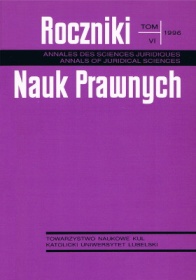The Value Added Tax as a Form of Taxing the Turnover
Abstract
Taxing the turnover is a tax construction which not only makes it possible to broadly influence state economy, but it is also one of the most important sources to finance the budget. The structure and form of this construction in particular systems of taxation, taking into consideration the economic situation of a given state, undergo changes and are constantly developed. This process leads to certain variety of the forms of turnover tax. At present, we can list three basic kinds of taxes deducted form the turnover:
1) one-stage turnover tax,
2) multi-stage turnover tax,
3) value added tax.
The paper analyzes each of the above methods of turnover taxation discusses their characteristic features, and their scope in which they are binding as well as their practical application.
The Tax and Finance Committee, which was set up in the 1950s within the framework of the E.E.C. deemed the value added tax as the most appropriate form of taxation. In order to facilitate economic contacts among the states gathered in the E.E.C. it was necessary to work out and popularize a uniformed construction of VAT. The study presents a long and complicated process of enforcing this tax into the tax systems of the state-members of the E.E.C. The author pinpoints that although VAT is binding in all the countries of the E.E.C. this does not mean that in each of them there functions an identical value added tax. People succeeded only in standardizing the basic and most important elements of the construction of VAT. Many detailed issues concerning this tax were different and are still different in particular states.
In the course of recent years VAT, deemed to be the best method of taxing turnover, has embraced the countries of East Europe, including Poland. The paper discusses the process of reception of the value added tax into the Polish taxation system. In Poland VAT has been functioning as a tax from goods and services; it replaced turnover tax which had functioned until mid-1993s in Poland. The paper has presented also some practical problems concerning the load of VAT, pointing at the same time at its effects for taxpayers and the country's economy.
Copyright (c) 1996 Roczniki Nauk Prawnych

This work is licensed under a Creative Commons Attribution-NonCommercial-NoDerivatives 4.0 International License.


